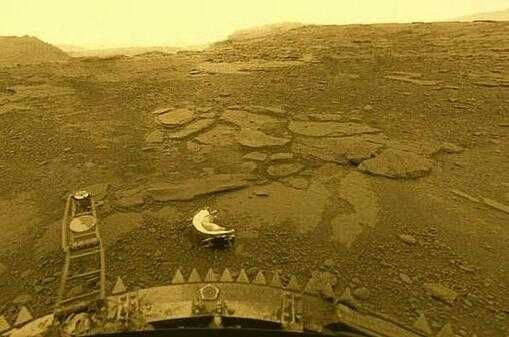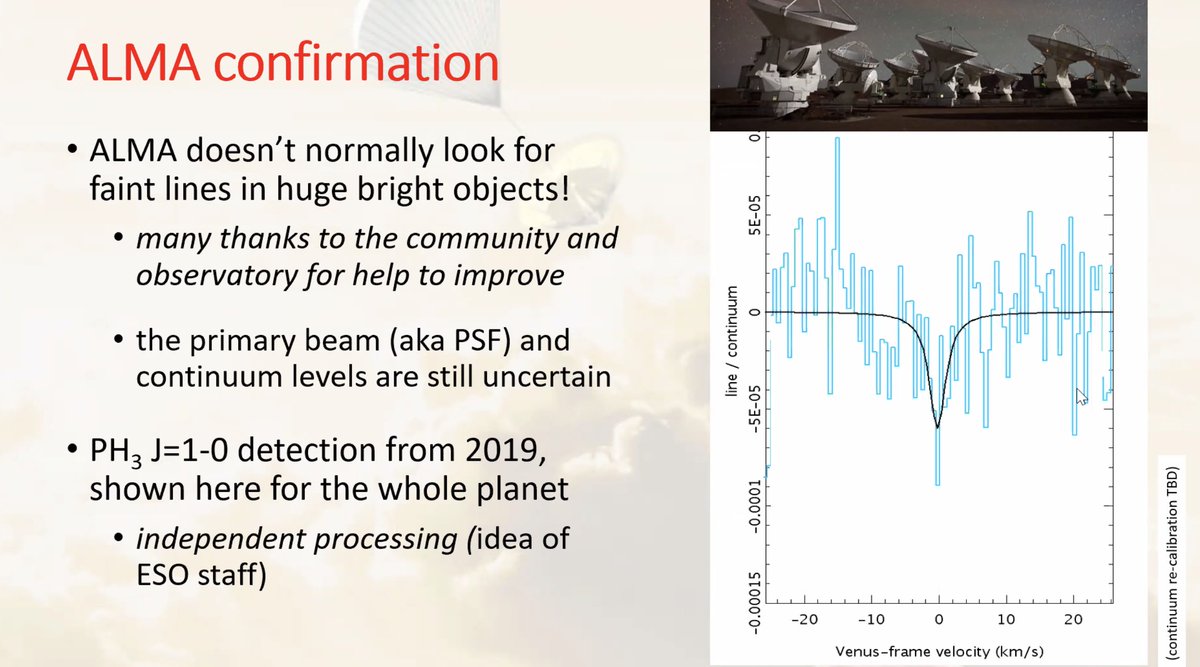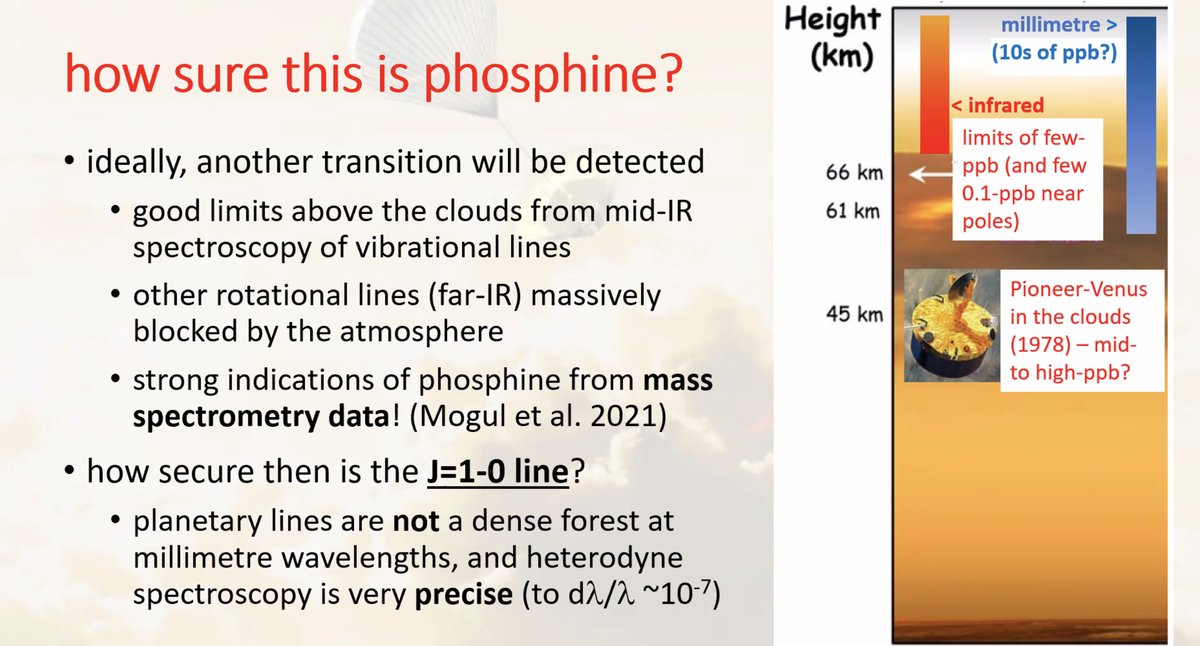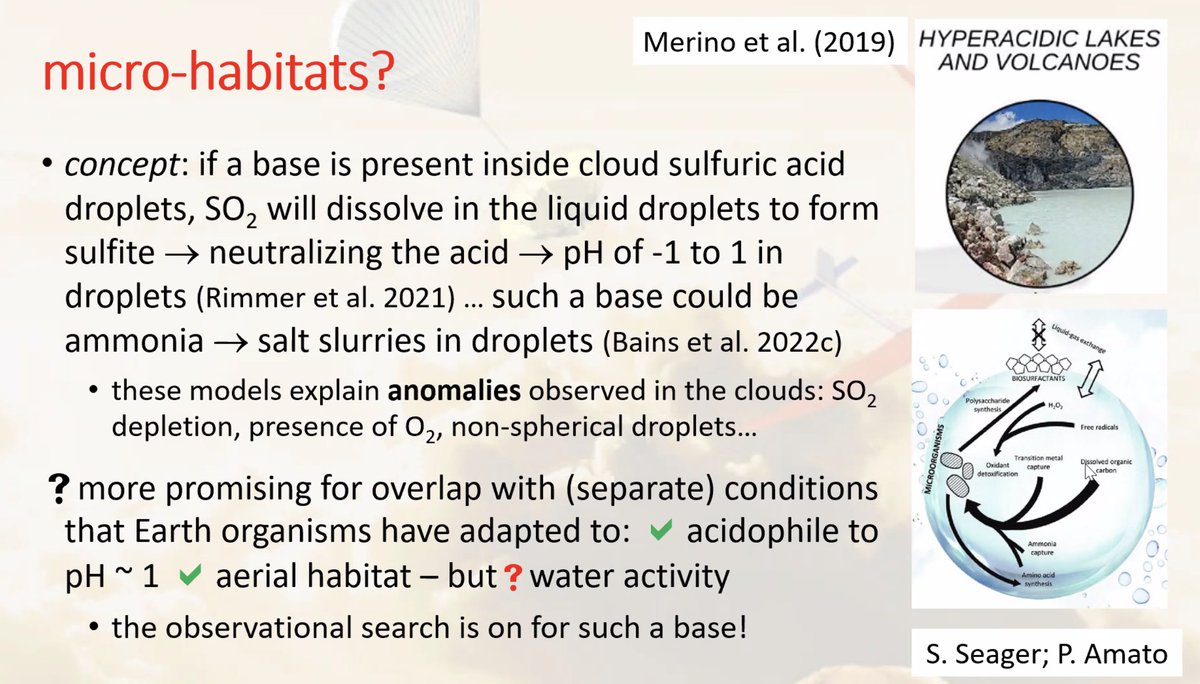
Follow this thread for live-tweets of the first plenary of #AAS240 — "Phosphine in the Atmosphere of Venus" by Jane Greaves
Mariner 2 / Venera 14 showed an inhospitable surface on Venus — 900 degrees Fahrenheit! thought to be a "runaway greenhouse" 

but -- some people think microorganisms (remnants of a biosphere on the surface) could have taken refuge in the clouds of Venus after the surface was "baked"
here's greaves' incredible paper on the phosphine detection: nature.com/articles/s4155…
we have little info for some basic questions on venus: only one set of images of a likely active volcanic flow, and no overall phosphorus abundance measurements!
millimeter waves (radio astro!) probe from the "temperate" clouds and up
phosphine (PH3) is an obscure but interesting biosignature — it's difficult to make in an oxidized environment like our atmosphere! it's found on earth industrially, by anaerobic organisms, maybe from volcanoes(?), and in the guts of penguins!
Jane calls this a "blue skies" project -- take just a few hours to try an observation that could be very cool, but is a bit of a long shot!
since Venus is an anaerobic environment, it made sense to look for phosphine since we see it in anaerobic environments here on Earth!
to do these observations, they used the 15m James Clerk Maxwell Telescope on Mauna Kea, which has been used to observe Venus for decades!
the spectra were a big surprise! the line center matches phosphine quite well, and did follow ups to check processing wasn't just doing something weird 

they then went to ALMA to confirm! looking for a faint line on a bright object is outside of ALMA's usual operations, but they worked with the observatory on how to make this happen
importantly -- this is an independent processing of the data!
importantly -- this is an independent processing of the data!

Jane poses a question -- why is this so hard? why has there been so much debate?
well, interferometry is hard! ALMA's amplitude / phase errors produce symmetries, which leads to the ripples in the above spectra
well, interferometry is hard! ALMA's amplitude / phase errors produce symmetries, which leads to the ripples in the above spectra
for JCMT, delayed signals can be misinterpreted by the spectrometer — so, they fit polynomials to the ripples, but NOT in a way that makes fake lines! 

spent THREE YEARS looking at the data set to make sure it was done correctly before it was published!
some updates in processing — JCMT data was processed by finding the ripples in Fourier space, which reduces any user bias! 

now using the JCMT legacy project to observe Venus, looking for PH3, HDO, SO2, H2SO4 all at the same time, to see how they vary together and confirm that they shift with Venus's velocity, making it clear they're not artifacts
to be really sure, ideally another phosphine transition will be detected. but the line already detected is pretty secure! we're pretty good at spectroscopy at millimeter wavelengths on planets! 

someone suggested that this is an offset line of SO2 — but the data shows a very low probability that this is true! the fit is better for the phosphine line. they also looked at other SO2 lines in the ALMA data to put limits on SO2 "contamination"
SO2 could only mimic phosphine if its abundance had jumped 10-fold within a week! something that's never been seen in millimeter monitoring
is phosphine in the clouds? we need more data to really understand where it's located
used some data from @SOFIAtelescope to look at other phosphine lines! they got a hint that it may be there, but still very preliminary.
Jane also says: "and a plea from me to keep this wonderful observatory flying"
Jane also says: "and a plea from me to keep this wonderful observatory flying"

suggests less phosphine in the higher clouds, and more in the lower clouds!
where might phosphine come from? is there any steady state reaction that can make it?
not really! hard to find the 3 hydrogens in a hydrogen-poor environment
not really! hard to find the 3 hydrogens in a hydrogen-poor environment

most pathways we know of would create phosphine more slowly than it could be destroyed by the atmosphere
a case against volcanoes: the idea is phosphides in the deep mantle could erupt into the clouds and react with sulphuric acid to make phosphine. talking with geochemists, there's not that much phosphide that would actually make it to the atmosphere.
and to get an explosive eruption, you need water -- which is notoriously absent on venus!
there's also a strong case against life, though. the clouds are low in water, and they're acidic. but conditions are not uniform, and always changing -- maybe there are niches that are habitable after all?
[greaves recommends looking at seager et al 2021 and kardasis et al 2022]
[greaves recommends looking at seager et al 2021 and kardasis et al 2022]
some final thoughts from jane....and that marks the end of our first live-tweeting of #AAS240! 

• • •
Missing some Tweet in this thread? You can try to
force a refresh






